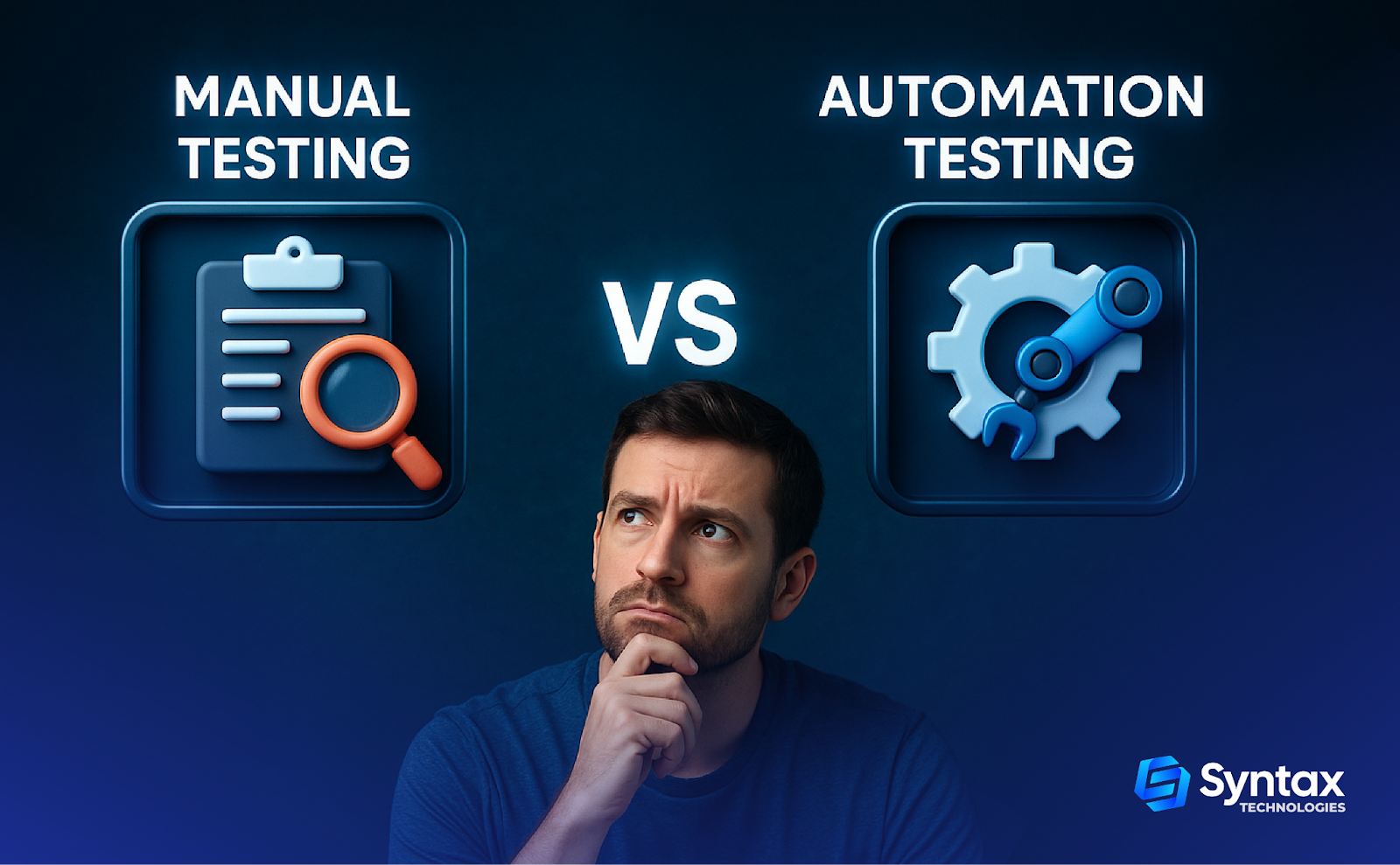This question pops up all the time — especially from beginners stepping into the world of QA:
“So… is automation testing basically just manual testing, but with some code added in?”
On the surface, it might seem like that. After all, both aim to test whether a piece of software works as expected. But with a closer look, the reality becomes much clearer: automation testing is more than just manual testing with a coding layer.

What Is Manual Testing, Really?
Manual testing is all about the tester, interacting with software just like a user would. Clicking buttons, entering data, navigating screens, and checking if things behave as expected—these tasks rely on their observation and intuition.
How Does Automation Testing Change the Game?
Automation testing comes into play when you start writing scripts or using tools to run those tests for you. Instead of repeating the same tasks every time the code changes, you build a suite of automated checks—think Selenium, Appium, or TestRail—that run in the background, sometimes overnight or even with every new code deployment.
Imagine This Scenario
A team is testing a login feature. A manual tester opens the browser, types in different combinations of usernames and passwords, clicks “Login,” and checks if the homepage loads correctly. This process is repeated over and over, for various test cases.
Now imagine having to do this for 100 different test scenarios — on multiple browsers — every day. That’s not just tiring; it’s inefficient.
This is where automation testing steps in.
With a test automation script, those same login scenarios can be executed automatically — across browsers, multiple times, in a fraction of the time — with the added benefit of logs, screenshots, and consistent reporting.
Manual vs Automation: Not Just About Speed
Manual testing is driven by human intuition. It’s ideal for testing usability, design, and new features where exploratory thinking is required.
Automation testing, on the other hand, is all about efficiency, accuracy, and scale. It’s designed for repetitive tasks — like regression tests, performance checks, and large-scale validation.
Automation Testing is not just Manual Steps turned into Code
It’s not enough to simply convert manual steps into code. It involves understanding test architecture, managing test data, handling browser behaviors, integrating with CI/CD pipelines, and ensuring that tests run smoothly with every code update. A good automation tester needs to think strategically:
- How can the test suite be scalable?
- Can the same test be reused in multiple workflows?
- Will the tests break with minor UI changes?
These questions go beyond the scope of manual testing.
Why Do Teams Use Both?
In real-world settings, the best teams blend both approaches. Automated testing catches the technical issues quickly and reliably, so developers can move fast. Manual testing spots those subtle issues and real user experiences that scripts often miss.
The Final Word
To call automation testing “just manual testing with code” oversimplifies its scope and power.
While both manual and automation testing are crucial, they serve different purposes. Manual testing brings human intuition. Automation brings speed, reliability, and scale.
For those serious about building a future in QA, learning automation isn’t optional — it’s the natural next step. A beginner-friendly SDET (Software Development Engineer in Test) course — like the one offered by Syntax Technologies — can help testers transition smoothly into automation roles, covering scripting, tools, frameworks, and real-world projects to become job-ready.


